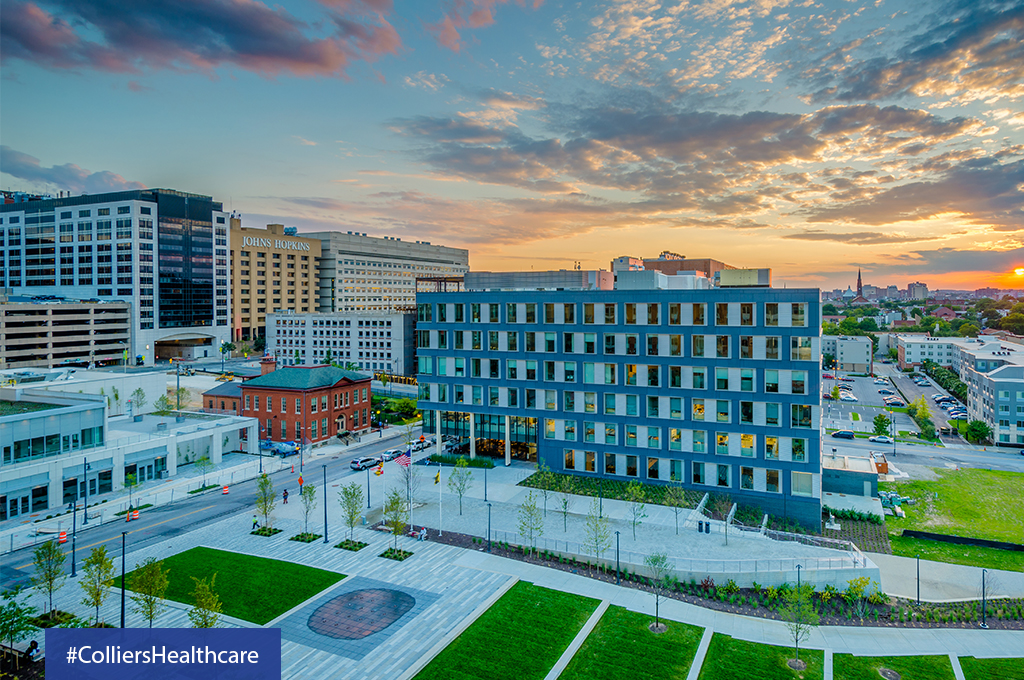The dawning of 2022 wasn’t the fresh start many hoped the new year would bring. Although everyday life was getting closer to 2019 norms, the U.S. was still very much under the cloud of the pandemic, with the Omicron variant averaging more than 800,000 new COVID-19 cases per day in January.
In tandem with the peaking variant, staggering inflation and rising interest rates hit hard in the first quarter and set a tone of apprehension for many consumers and institutions.
These hurdles early in the year didn’t dampen a strong first half for healthcare, however, as investment activity, medical office building (MOB) demand and continued “medtail” expansion illuminated strong performance for the sector.
First Half Highlights
Globe St.com reported that 712 M&A deals took place in Q1 of this year – a “near record “and an increase from the 635 transactions in the same period a year prior. However, the volume was a slowdown from the explosion of deals that took place later in 2021.
Among those numerous transactions, Healthcare Realty Trust and Healthcare Trust of America announced in February a merger valued at $18 billion. The merger created one of the largest pure-play medical office REITs in the market, comprised of more than 700 properties totaling 44 million square feet.
MOB assets dominated medical real estate investment in 2021, accounting for 60% of total medical real estate sales volume, per Colliers’ research. This demand kept pace going into 2022, as investors were seeking stable, recession-resistant properties amid the economic tumult.
Workforce shortages, which have plagued the sector since the onset of the pandemic, have shown signs of slight improvement in recent months. There were 57,000 healthcare jobs added in June, according to data from the U.S. Bureau of Labor Statistics, settling healthcare employment 1.1% below February 2020.
Growing Opportunity amid Retail and Office Vacancy
The average retail vacancy peaked late 2021, many storefronts going dark as e-commerce continued to surge. And with an increasingly distributed workforce, the U.S. office vacancy reached 15% in Q1. For healthcare occupiers, these shifting sectors posed increasing opportunity for transforming the empty spaces into healthcare locations.
According to the Advisory Board, there are 32 enclosed malls in the U.S. that currently house health care services as part of their footprint, and of those medical transformations, almost one-third were announced after the start of the pandemic.
Anjee Solanki, Colliers’ Head of Retail, explains, “Over the last five years, we have seen an increase in healthcare-related tenants, taking on more than 36 million square feet of retail space with an average deal size of 3,894 square feet.”
The Remainder of the Year and 2023
As the U.S. economy heads toward a potential recessionary period, many healthcare providers will prioritize cost containment strategies. In the face of rising costs, providers may take measures such as reducing services, closing facilities, job cuts and more.
The American Hospital Association summarized the situation as follows: “The current inflationary environment has put unprecedented pressure on America’s hospitals and health systems. These shifts in the healthcare environment are putting enormous strain on hospitals and health systems, which will continue into 2023 and beyond.”
Despite these concerns, MOB activity will likely stay the course. According to Bain & Company, “healthcare’s high returns, recession resilience, and demographic tailwinds,” are attracting more diverse investors with a broader range of strategies.

 Shawn Janus
Shawn Janus


